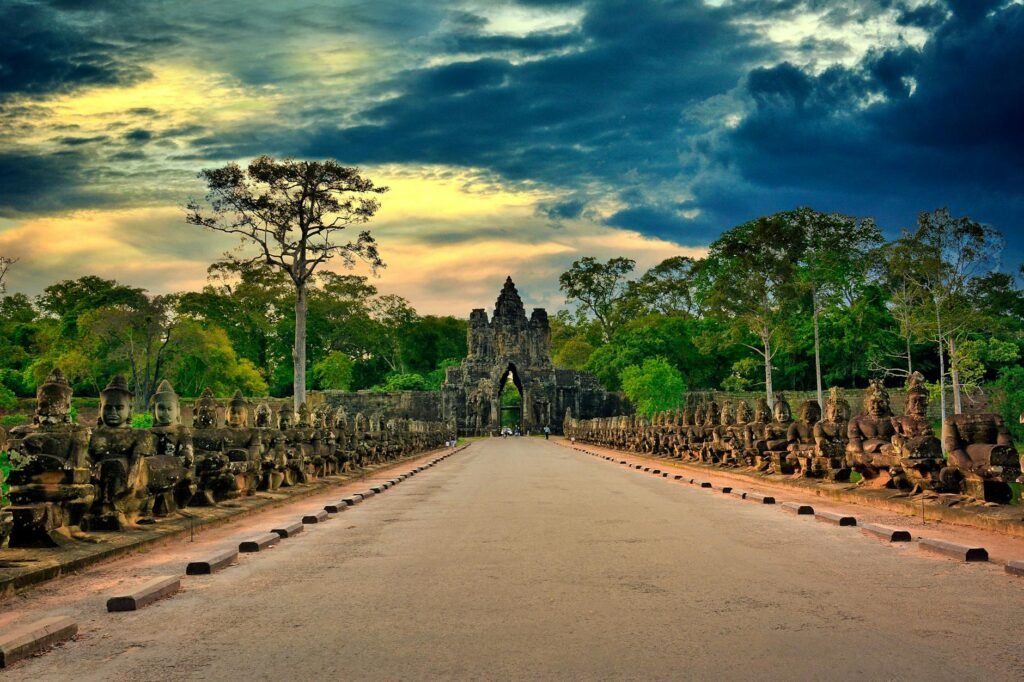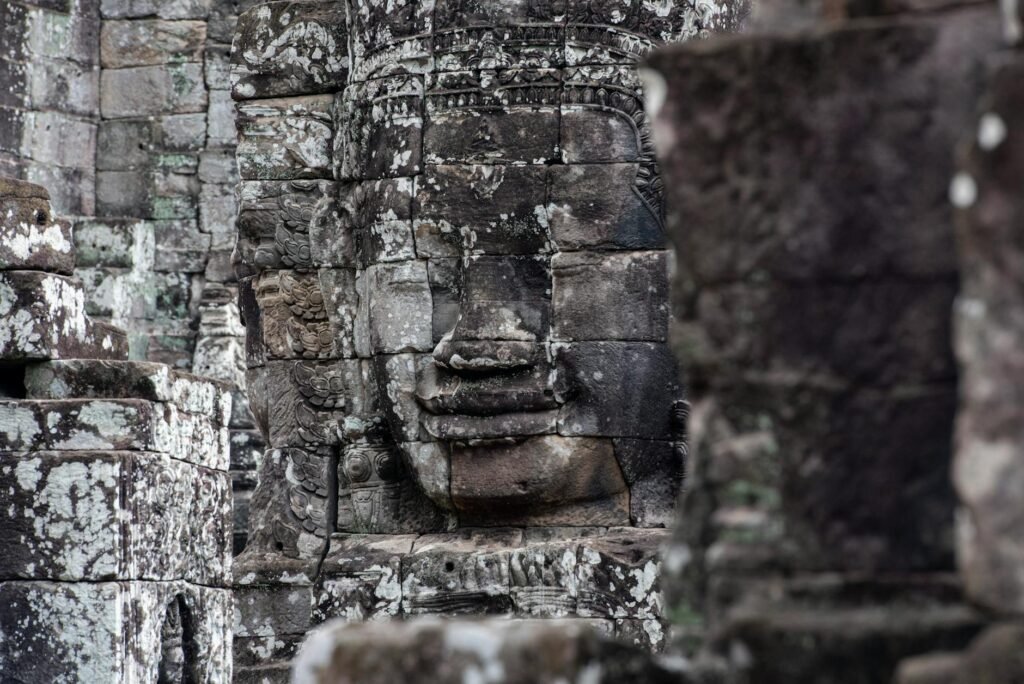Angkor Thom, meaning “Great City” in Khmer, is a truly awe-inspiring testament to the Khmer Empire’s power and artistry. Enclosed within its formidable walls, this ancient city reveals a captivating glimpse into a civilization that flourished centuries ago. Prepare to be transported back in time as we explore its wonders.
Entering the City Through the South Gate
The journey into Angkor Thom begins at its South Gate, a majestic structure adorned with intricate carvings. The towering faces of Avalokiteshvara, the Bodhisattva of compassion, gaze serenely from the gate’s lintel. As you pass through, the grandeur of the city unfolds before you, hinting at the rich history and spiritual significance that lies ahead. 
Bayon Temple: The Temple of the Smiling Faces
The Bayon temple, at the heart of Angkor Thom, is undoubtedly the most iconic landmark. Its unique feature is its 216 massive stone faces, etched into the towers, their enigmatic smiles captivating visitors for centuries. The sheer scale and detail of these carvings are breathtaking and leave a lasting impression. You can spend hours exploring its intricate corridors and hidden chambers, each one a testament to the skill of the Khmer artisans. For more information on Bayon’s rich history, check out this resource: Khmer Temple History. 
The Terrace of the Elephants and the Terrace of the Leper King
These impressive terraces, located side-by-side, once served as ceremonial platforms. The Terrace of the Elephants, with its long balustrade adorned with elephant carvings, was likely used for royal processions and celebrations. The Terrace of the Leper King, with its enigmatic central statue, presents a more mysterious aura. Learn more about the mystery behind the Leper King statue. [IMAGE_3_HERE]
Phimeanakas: A Majestic Pyramid
Rising majestically above the surrounding structures, Phimeanakas is a three-tiered pyramid temple, offering stunning panoramic views of Angkor Thom. Its imposing presence evokes a sense of awe and wonder, symbolizing the power and sophistication of the Khmer Empire. Climbing to the top (if allowed) is a must, but remember to be respectful of the site and its history. Discover the stories behind Angkor’s temples.
Baphuon Temple: A Monumental Structure
The Baphuon, one of the largest temples within Angkor Thom, is a remarkable testament to Khmer architectural prowess. Its original form was quite different from what we see today, and its reconstruction is an ongoing process. The scale of this temple is enormous, offering an extraordinary sensory experience that will stay with you long after you have left. [IMAGE_4_HERE] For more on the restoration process, visit this website: Angkor Wat Restoration Project
Exploring Angkor Thom is like stepping into another world—a world of towering temples, enigmatic smiles, and a rich history waiting to be uncovered. Each structure within the ancient city tells a unique story, leaving a lasting impression on all who visit. This journey back in time is truly unforgettable. Don’t forget to take a look at essential tips for visiting Angkor Wat for your own trip.
Frequently Asked Questions
What is the best time to visit Angkor Thom? The best time to visit is during the dry season (November to April) for pleasant weather and fewer crowds.
How much time should I allocate to explore Angkor Thom? At least a full day is recommended, but ideally, two or more days allow for a more thorough exploration.
Are there any restrictions on photography within Angkor Thom? While photography is generally permitted, flash photography is often restricted to protect the ancient structures.
What should I wear to visit Angkor Thom? Dress modestly, covering your shoulders and knees, out of respect for the religious significance of the site.
Can I hire a guide to explore Angkor Thom? Yes, hiring a local guide is highly recommended as they can provide invaluable insights and historical context.